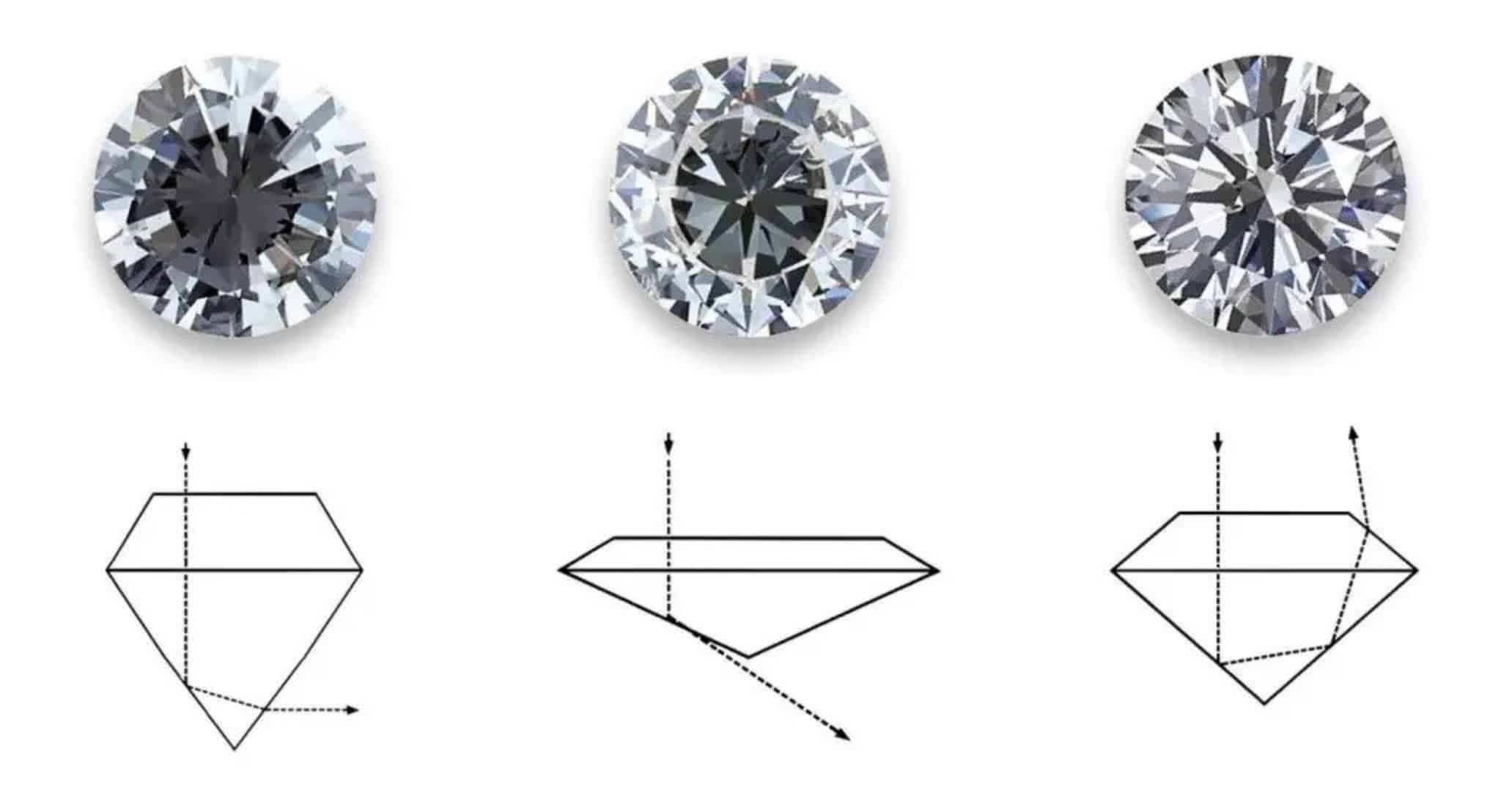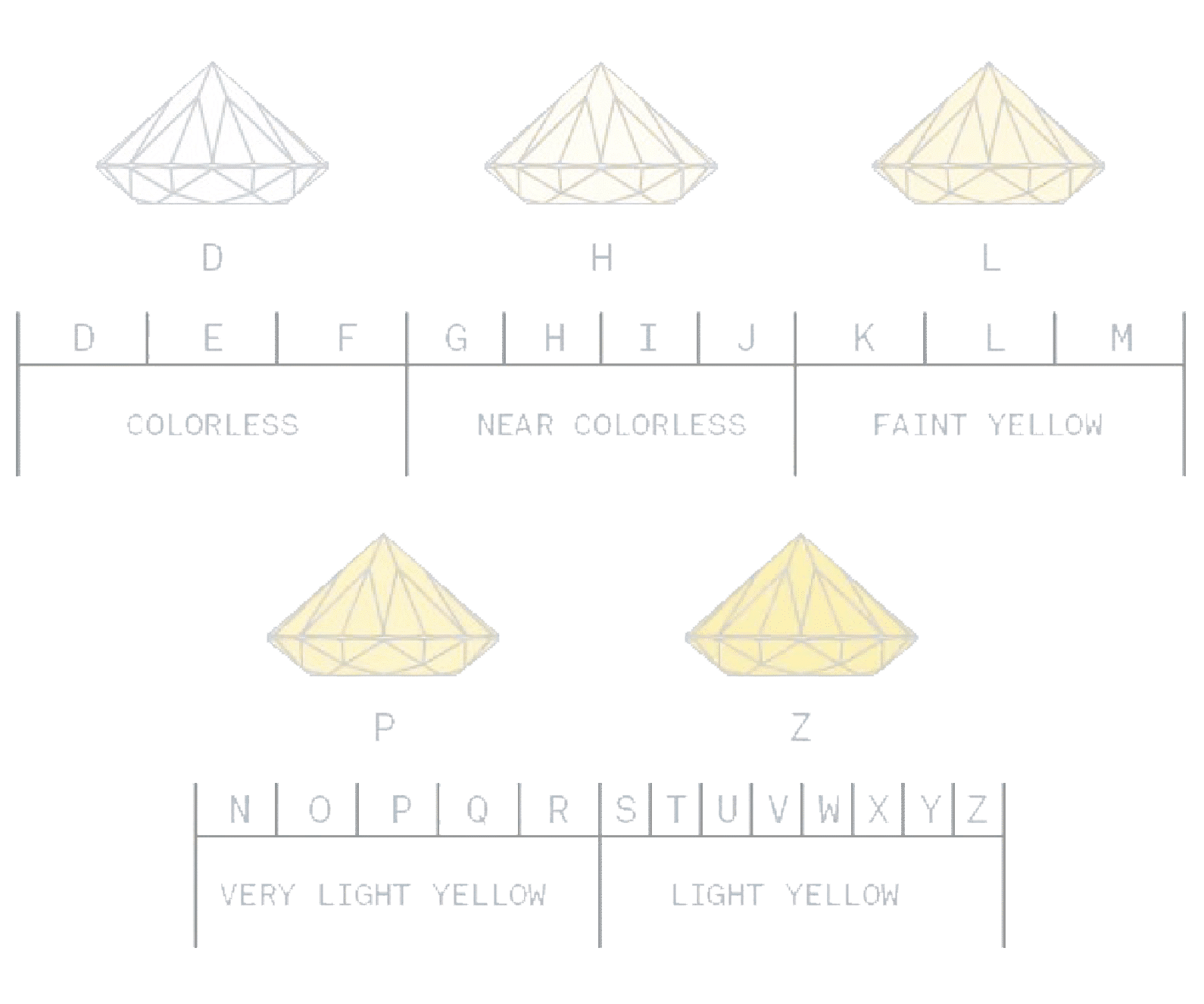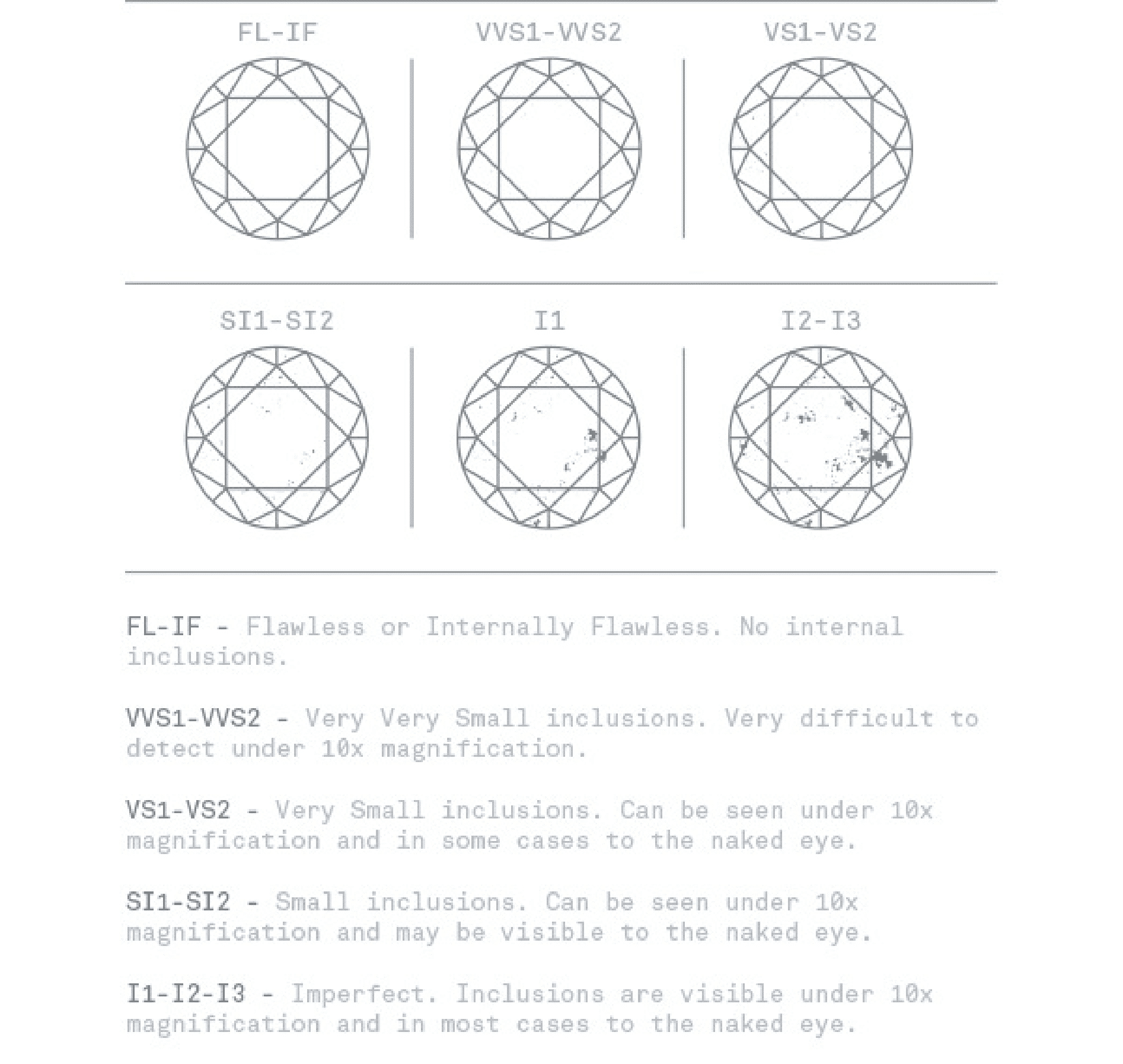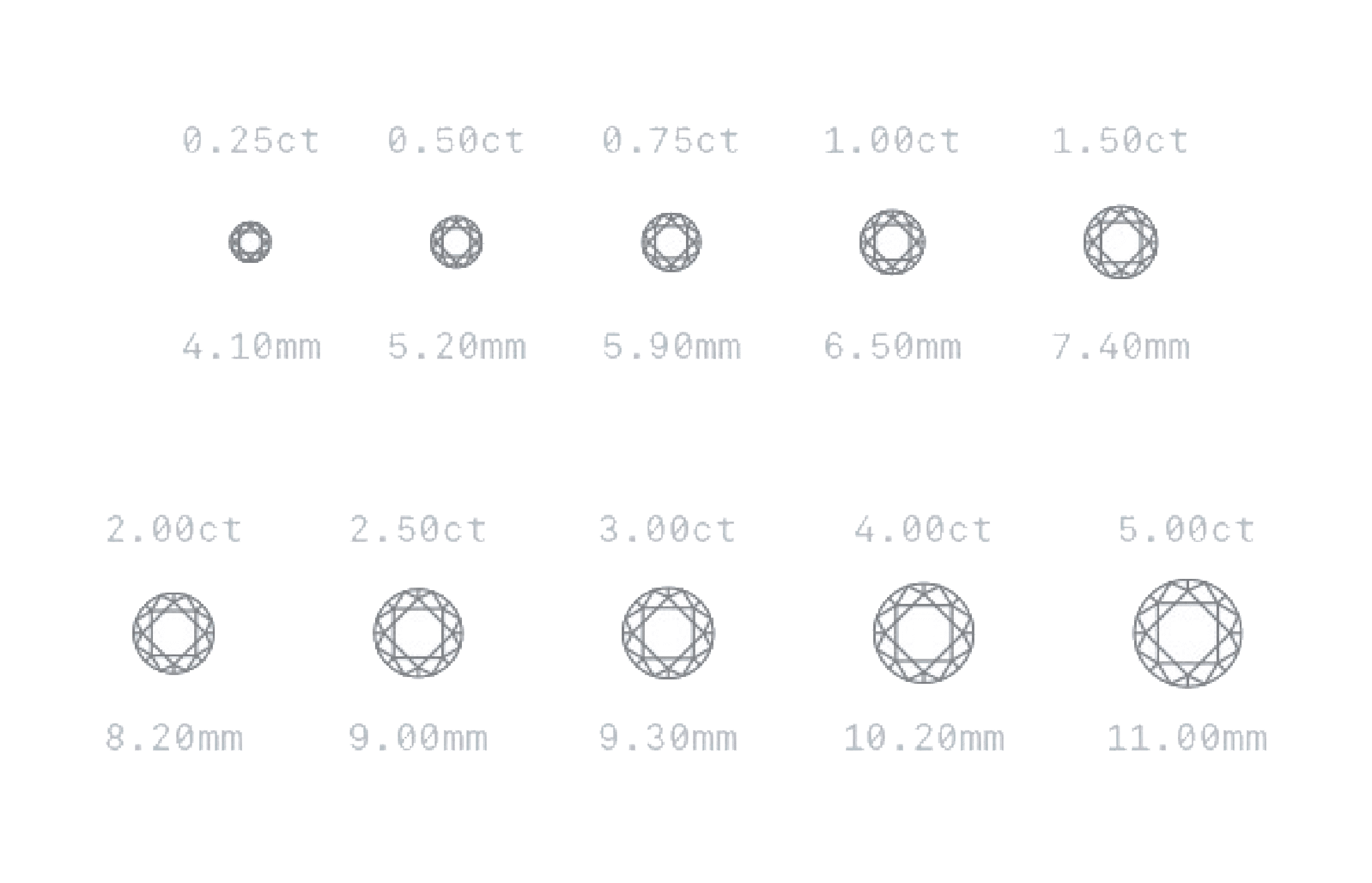The 4 C’s of Diamond Grading
When you’re ready to buy a diamond brilliantly set within a unique piece of jewelry, you can rest assured our stones are rigorously graded by the Gemological Institute of America’s (GIA) diamond grading scale, also known as the “Four C’s” of diamond grading: Cut, Color, Clarity and Carat Weight.
This is a quick overview of the quality characteristics of diamonds, but, of course, there are infinite combination possibilities. After looking at hundreds of thousands of diamonds in our careers, we know that not all G color, SI1 clarity diamonds look alike. Each diamond has its own personality, so don’t shop for a diamond certificate. Instead, let our experienced staff help you find the diamond that speaks to you.
The 4 C’s of Diamond Grading
When you’re ready to buy a diamond brilliantly set within a unique piece of jewelry, you can rest assured our stones are rigorously graded by the Gemological Institute of America’s (GIA) diamond grading scale, also known as the “Four C’s” of diamond grading: Cut, Color, Clarity and Carat Weight.
This is a quick overview of the quality characteristics of diamonds, but, of course, there are infinite combination possibilities. After looking at hundreds of thousands of diamonds in our careers, we know that not all G color, SI1 clarity diamonds look alike. Each diamond has its own personality, so don’t shop for a diamond certificate. Instead, let our experienced staff help you find the diamond that speaks to you.
CUT
In our opinion, cut is the most crucial factor in determining diamond quality. Not to be confused with diamond shape, diamond cut refers to the proportions of the diamond, the polish quality and overall symmetry. Together, these characteristics determine the diamond’s brightness and signature “sparkle.” A diamond’s unique ability to manipulate light efficiently can only be released and maximized by cutting and polishing the diamond to an extremely high level of accuracy. For this reason, diamonds that are cut to appear large can end up looking flat or lifeless.
The opposite can occur when a diamond is cut to conserve the most weight from the rough diamond — usually resulting in a dark appearance. We carry diamonds that are cut with just the right proportions to show off their most beautiful brightness, fire and scintillation.

Brightness: The white light that reflects from a diamond’s facets. Diamonds that reflect a lot of white light indicate a well-cut diamond.
Fire: The flashes of color you see when looking at a diamond. Well-cut diamonds should display a beautiful show of fireworks.
Scintillation: The sparkle and light-dark pattern your diamond displays. A well-cut diamond should have an even distribution of bright and dark areas and lots of flash when moved.
The quality of the cutting can affect the price of a diamond by up to 50 percent, so remember, there is a reason one diamond is less expensive than another — even if the color and clarity are identical.
COLOR
Most diamonds, even white diamonds, possess varying degrees of yellow or brown. Small, subtle differences in body color can make a substantial difference in value. The color grading scale starts at D (colorless) and goes down to Z (yellow).
The color can also be affected by the diamond’s cut. For example, a round brilliant cut diamond contains so many facets that it appears brighter and with less color. Emerald and Asscher cuts have the opposite effect as they have fewer facets.

To accurately and consistently grade color, an Gemological Institute of America experienced grader will use special lighting to compare the graded diamond to a set of GIA Master Color Comparison Diamonds, which have met exacting standards of cut, color, clarity, and carat weight. All of Coffin & Trout’s diamonds have been color graded against our Master Color Set of Diamonds.
CLARITY
This refers to inclusions, such as feathers or crystals, inside or on the surface of the diamond. The fewer inclusions or blemishes a diamond has, the more valuable. To locate these tiny characteristics, our gemologist will use a binocular microscope that magnifies the diamond more than ten times.

Then, evaluating the size, location, nature, number and color of all the inclusions and blemishes, the gemologist will assign a clarity grade according to a scale from the GIA.
- FL-IF: Flawless or Internally Flawless. No internal inclusions.
- VVS1-VVS2: Very, Very Small inclusions that are very difficult to detect under 10x magnification.
- VS1-VS2: Very Small inclusions that are somewhat easy to be seen under 10x magnification by a trained Gemologist.
- SI1-SI2: Small Inclusions that can be seen under 10x magnification and may be visible to the naked eye.
- I1-I2-I3: Imperfect. Inclusions are visible under 10x magnification and, in most cases, to the naked eye.
CARAT
Carat refers to the standard used to measure diamond weight. Each carat is divided into points, with each point representing 1/100th of a carat. So, 50 points would equal one-half carat, just like pennies to a dollar. A diamond’s size is a separate measurement and refers to the stone’s face-up size, which can vary among two diamonds of equal carat.

While carat may be the least important of the four Cs in determining value, it may be the easiest of the four Cs to gauge accurately and is the most objective. As diamonds increase in size, their cost tends to increase exponentially. Thus, a one-carat diamond may cost more than twice as much as a one-half-carat stone of equal quality.

